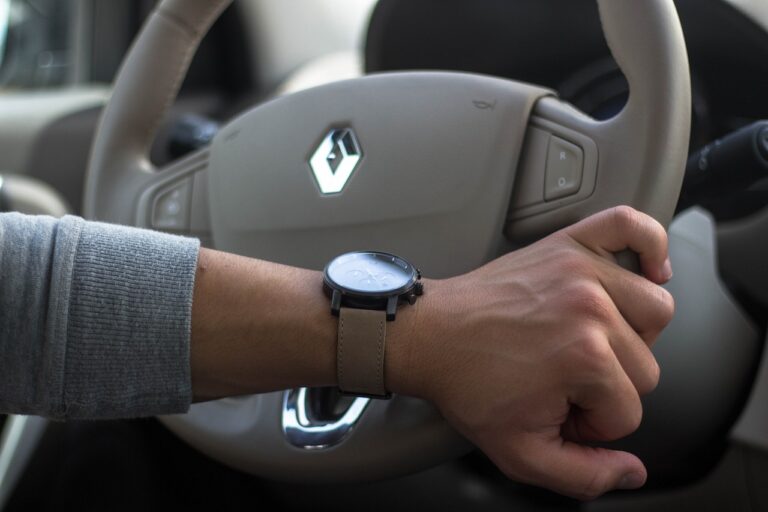Vehicle-to-Everything Communication Systems: Enhancing Connectivity
Vehicle-to-Everything (V2X) communication systems are rapidly evolving to reshape the way vehicles interact with each other and their surroundings. As we look ahead, the integration of 5G technology is poised to revolutionize V2X systems, enhancing data transmission speeds and network reliability. This advancement will enable vehicles to communicate seamlessly with each other, infrastructure, pedestrians, and even cyclists in real time, leading to safer and more efficient transportation systems.
Moreover, artificial intelligence (AI) and machine learning algorithms are expected to play a crucial role in the future development of V2X communication systems. These technologies will enable vehicles to make split-second decisions based on complex data analysis, allowing for predictive maintenance, optimized route planning, and enhanced overall vehicle safety. The continuous advancements in V2X technology promise to unlock a new era of smart and interconnected transportation networks, paving the way for a more sustainable and efficient future.
Case Studies of Successful Implementation of Vehicle-to-Everything Communication Systems
In a recent case study conducted by a leading automotive company, the successful implementation of vehicle-to-everything communication systems led to a significant decrease in road accidents and improved traffic flow. By enabling vehicles to communicate with one another and with the surrounding infrastructure, the data exchange facilitated real-time updates on road conditions and potential hazards, allowing for prompt and informed decision-making by drivers. This not only enhanced the overall safety of the road network but also contributed to a more efficient transportation system.
Another notable example showcasing the effectiveness of vehicle-to-everything communication systems is a pilot project in a smart city environment. Through the integration of V2X technology, vehicles were able to receive signals from traffic lights, pedestrian crossings, and even emergency vehicles, leading to smoother traffic transitions and reduced congestion. The successful coordination between various components of the transportation ecosystem not only optimized travel times for commuters but also minimized carbon emissions through more streamlined driving patterns.
• The successful implementation of vehicle-to-everything communication systems led to a decrease in road accidents and improved traffic flow
• Vehicles were able to communicate with each other and with surrounding infrastructure for real-time updates on road conditions
• Prompt and informed decision-making by drivers enhanced overall safety of the road network
• Contributed to a more efficient transportation system
• Integration of V2X technology in a smart city environment led to smoother traffic transitions and reduced congestion
• Vehicles received signals from traffic lights, pedestrian crossings, and emergency vehicles for optimized travel times
• Successful coordination between various components of the transportation ecosystem minimized carbon emissions through streamlined driving patterns
Conclusion and Recommendations for Adopting Vehicle-to-Everything Communication Systems
In conclusion, the implementation of Vehicle-to-Everything (V2X) communication systems holds great promise for enhancing road safety, reducing traffic congestion, and improving overall transportation efficiency. As seen in the case studies, successful adoption of V2X technology requires collaboration among stakeholders, robust infrastructure support, and clear regulatory frameworks. The results speak for themselves, showcasing the potential for V2X systems to revolutionize how vehicles interact with each other and the surrounding environment.
Moving forward, it is recommended that policymakers prioritize the development and deployment of V2X communication systems to ensure a seamless transition to a smarter and more interconnected transportation network. Investing in V2X technology not only benefits drivers and pedestrians but also contributes to sustainable urban development and intelligent mobility solutions. By fostering innovation and embracing the opportunities presented by V2X systems, we can pave the way for a more efficient and safer transportation ecosystem for the future.
What are some future developments we can expect in vehicle-to-everything communication systems?
Some future developments in vehicle-to-everything communication systems include improved interoperability between vehicles and infrastructure, enhanced cybersecurity measures, and expanded use cases for V2X technology.
Can you provide examples of successful implementation of vehicle-to-everything communication systems?
Yes, some examples of successful implementation of V2X technology include connected intersection management systems, cooperative adaptive cruise control, and emergency vehicle preemption systems.
What are the key takeaways from adopting vehicle-to-everything communication systems?
The key takeaways from adopting V2X technology include improved road safety, reduced traffic congestion, enhanced mobility services, and potential cost savings for transportation agencies and businesses.
How can organizations and policymakers promote the adoption of vehicle-to-everything communication systems?
Organizations and policymakers can promote the adoption of V2X technology by investing in infrastructure upgrades, supporting research and development initiatives, incentivizing adoption through funding programs, and collaborating with industry stakeholders to establish standards and protocols.
What are some challenges that may arise from implementing vehicle-to-everything communication systems?
Some challenges that may arise from implementing V2X technology include concerns about data privacy and security, interoperability issues between different V2X technologies, and the need for ongoing maintenance and updates to ensure system reliability.







